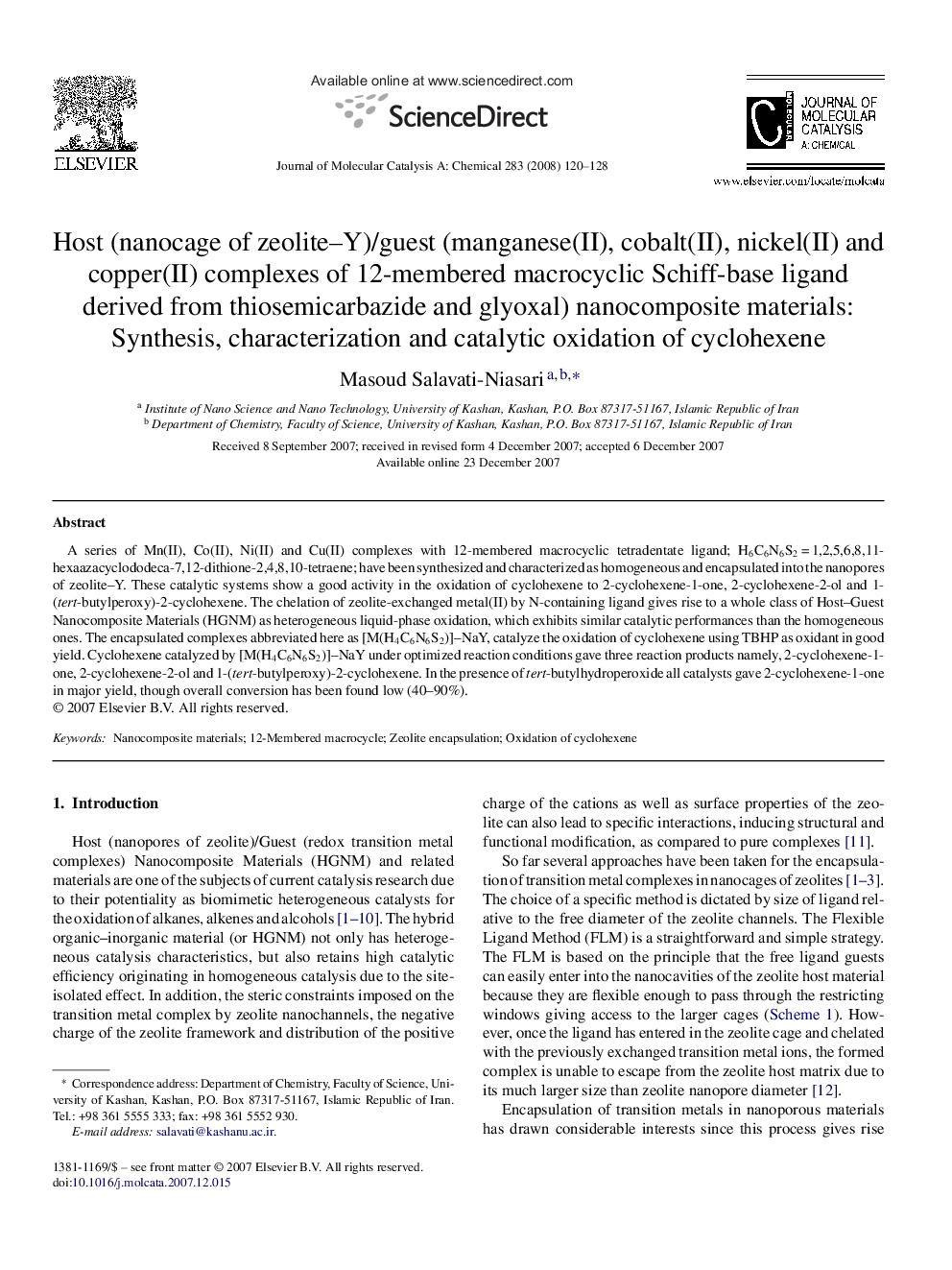| Article ID | Journal | Published Year | Pages | File Type |
|---|---|---|---|---|
| 68072 | Journal of Molecular Catalysis A: Chemical | 2008 | 9 Pages |
A series of Mn(II), Co(II), Ni(II) and Cu(II) complexes with 12-membered macrocyclic tetradentate ligand; H6C6N6S2 = 1,2,5,6,8,11-hexaazacyclododeca-7,12-dithione-2,4,8,10-tetraene; have been synthesized and characterized as homogeneous and encapsulated into the nanopores of zeolite–Y. These catalytic systems show a good activity in the oxidation of cyclohexene to 2-cyclohexene-1-one, 2-cyclohexene-2-ol and 1-(tert-butylperoxy)-2-cyclohexene. The chelation of zeolite-exchanged metal(II) by N-containing ligand gives rise to a whole class of Host–Guest Nanocomposite Materials (HGNM) as heterogeneous liquid-phase oxidation, which exhibits similar catalytic performances than the homogeneous ones. The encapsulated complexes abbreviated here as [M(H4C6N6S2)]–NaY, catalyze the oxidation of cyclohexene using TBHP as oxidant in good yield. Cyclohexene catalyzed by [M(H4C6N6S2)]–NaY under optimized reaction conditions gave three reaction products namely, 2-cyclohexene-1-one, 2-cyclohexene-2-ol and 1-(tert-butylperoxy)-2-cyclohexene. In the presence of tert-butylhydroperoxide all catalysts gave 2-cyclohexene-1-one in major yield, though overall conversion has been found low (40–90%).
Graphical abstractA series of Mn(II), Co(II), Ni(II) and Cu(II) complexes with 12-membered macrocyclic tetradentate ligand have been synthesized and characterized as homogeneous and encapsulated into the nanopores of zeolite–Y. The chelation of zeolite-exchanged metal(II) by N-containing ligand gives rise to a whole class of Host–Guest Nanocomposite Materials (HGNM) as heterogeneous liquid-phase oxidation, which exhibits similar catalytic performances than the homogeneous ones.Figure optionsDownload full-size imageDownload as PowerPoint slide
